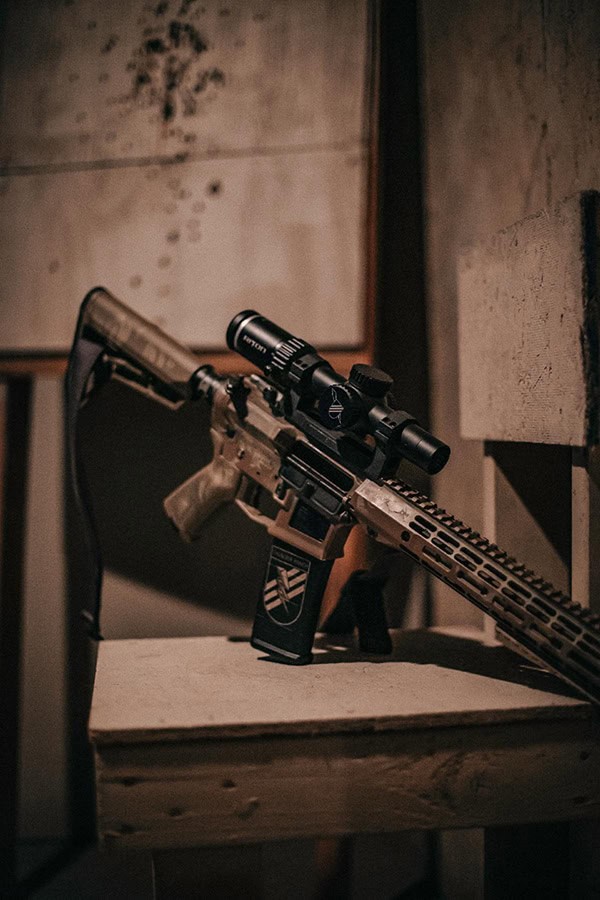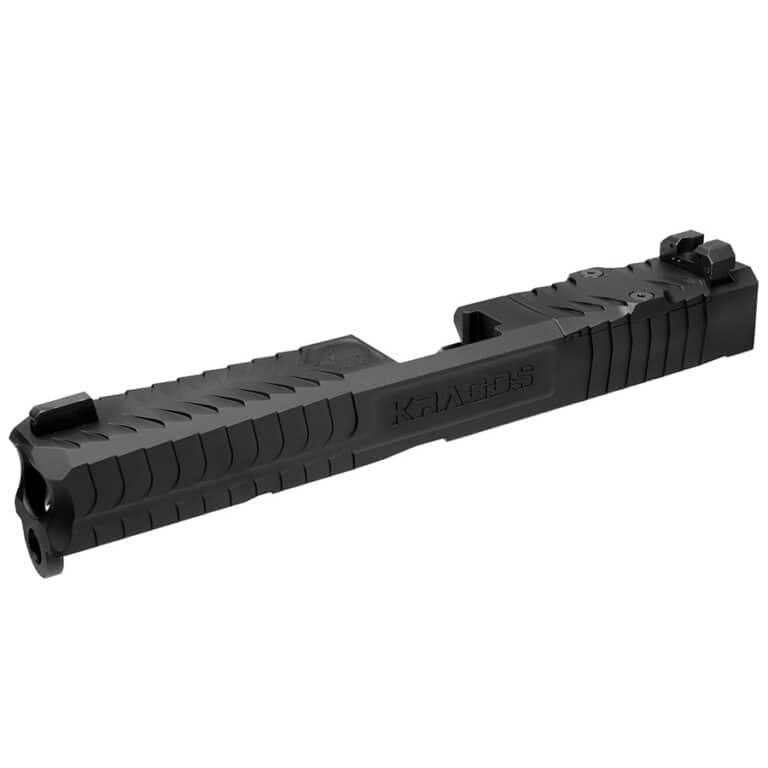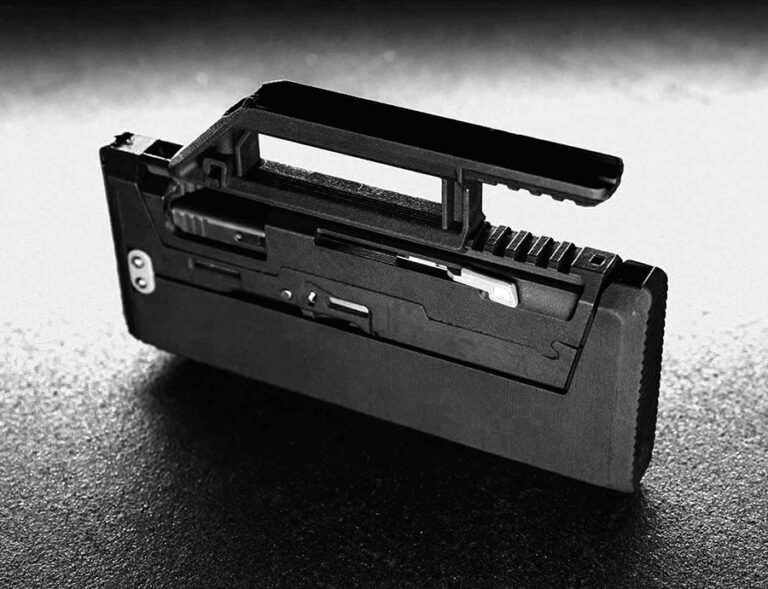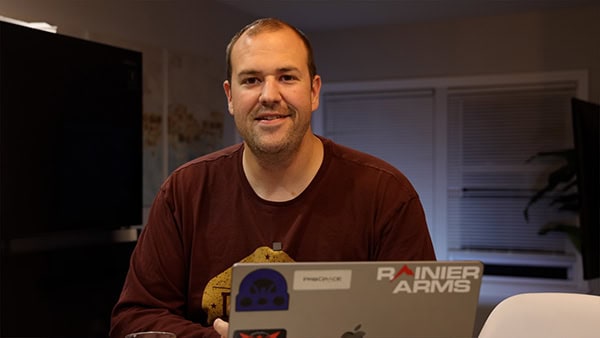SureFire SOCOM-4 Series—A New Fighting Suppressor
Fountain Valley, CA—SureFire, LLC, manufacturer of the world’s finest—and most innovative—illumination tools and…
Fountain Valley, CA—SureFire, LLC, manufacturer of the world’s finest—and most innovative—illumination tools and…
Shinenyx—creators of a cutting-edge fusion of digital night vision and thermal imaging technology—has…
German Precision Optics’ Passion APO is a high-performance compact spotting scope designed and…
The Mod-Navy Qual I’ve been doing this qual (or drill, or whatever the current nom…
• Built for road trips and off-road use• Manual transmission equipped• Wrapped in MultiCam Arctic…
I designed the Button Man to give shooters a low-round-count, low-light-engagement drill that involved both…
Painters have brushes. Masons have their trowels and SWAT officers have a forged steel Halligan tool. Every profession has specific tools to accomplish their required tasks. Few however have the spectrum of tools that the SWAT profession requires. The professional SWAT officer must embrace the fact that no two missions will be the same. Because of this they must be prepared to pick and choose specific tools for the task.
Since its’ first days under Chief Gates at the Los Angeles Police Department to today, many things have changed. What is equally as true is that some things have remained the same. If SWAT is called, things are grim. Bad people still will do harm to innocent people and SWAT can use heavy objects to turn locked doors into splinters.
In a recent SWAT Close Quarters Operations Course we were able to get a taste of what the current officer considers to be necessary on their load out. We saw a spectrum of gear but in the end an obvious theme played out. If it is relatively small – carry it with you at all times. This philosophy keeps the officers balancing weight and bulk against speed and agility. After three days of intense training, we saw some modifications in gear load out, but it was obvious that most officers had done their homework and did not have to change a thing.
We saw this as the perfect opportunity to share with you what a general load out for modern SWAT officers is. While this is in no way a “standard” list, it is pretty typical. So let’s break it down from head to toe.

The helmets used by SWAT are generally a IIIA ballistic unit. Many teams opt for military style PASGT or MICH helmets. This is the case primarily because of cost and availability. Another popular but not as commonly seen helmet is the Ops Core Ballistic helmet. Popular among special operations, this helmet is light, sturdy and littered with rails to mate with needed accessories. Many agencies have a savvy officer who knows the Department of Defense to Law Enforcement route very well. These officers are worth their weight in gold as they are able to save their agencies thousands of dollars by acquiring “recycled” gear through the DOD.
The initial focus on uniforms was simply to match and create a better team dynamic. They were hearty and often were clones of, or actual military BDU’s. As technology has evolved, so has the SWAT uniform. While many styles and flavors exist, there are some commonalities across the board. New uniforms still track with current military gear and wisely so. Modern uniforms are fire retardant, moisture wicking and water resistant. Mix in strong seams, reinforced knees and elbows and a very versatile uniform is born. Brands we see run across the spectrum but include Vertx, Crye Precision to Blackhawk.
Protective eye wear is one of the areas that have seen the greatest advancement. Gone are the days of ski goggles. It is now the age of light, ballistic rated protective eye wear. The common theme is light weight, wrap around eye wear that provides ballistic protection. While obviously not bullet proof, they are an absolute necessity to protect against flying debris, brass and any other object that could ruin an officer’s day and risk lives. The market for protective eye wear has grown as demand has skyrocketed. With the expansion of the civilian shooting population, the glasses market has exploded. This provides the SWAT officer with a vast array of choices. What we have found generally represented though is pretty plane Jane, clear wrap around ballistic lenses with a light flexible frame. The two most often seen are Oakleys and Smith Optics. While some fashion statements exist, most officers opt for practicality versus flair.

As with protective eye wear, the tactical vest realm has evolved dramatically over the past 40+ years. Today’s teams have their choice of dozens of styles and configurations to meet their specific needs. The vests of today are modular and allow an officer to incorporate both soft armor and plates onto the vest. This makes getting “geared up” much easier and faster. The vest has become the go to location for SWAT gear. Some agencies require that all officers have an identical load out while some allow vests to be customized by each officer. The vest set up is by far the most varied part of the SWAT officer’s kit. While certain things are common, we have yet to find two agencies that have exact duplicate vest configurations. One thing that we do see across the board is the presence of both soft armor and ballistic plates in all vests.
Fortunately there are many companies making solid operator quality vests. The ever restrictive presence of a budget though drives what the team will use. We have seen a few London Bridge and Tyr Tactical level vests, but most are using Blackhawk and similar gear.
So what is on the vests? What we see are things deemed absolutely necessary. These include:
Emergency trauma kit: For treating injured teammates as well as self care.
Knife: A last line of defense and more commonly a multi use tool.
Hand held flashlight: For searching when a weapon mounted light is not appropriate.
Radio handset / PTT: Most agencies still utilize a standard radio handset clipped to the vest.
Radio: A majority of agencies use their portable patrol radios in tactical units.
Extra pistol magazines: The astute officer knows that two is one and one is none. They will always carry a minimum of two extra pistol magazines.
Extra rifle magazines: See note above. One of the most common reasons for weapon malfunctions is a defective or worn out magazine. Once again, we see a minimum of two additional magazines on most vests.
Flash bang: Depending on an agencies certification and SOP many officers carry a light / noise distraction device. Commonly called a flash bang, they are a solid tool for the right situation.
Door stops: One of the most useful tools on the vest. Once a room is cleared a rubber door stop / wedge can be put in place to keep the door from closing behind the officers.
Glow sticks: Glow sticks are used to mark rooms and their condition. One color for “clear”, one for “not cleared” etc. They are a simple visual tool that is effective and inexpensive.
Zip cuffs: Used by agencies around the world, zip cuffs offer the officer a quick and effective way of securing subjects during operations. Light weight and effective, they are a must on any vest.
Sharpie / black marker: There are times when information must be recorded on site and in the moment. A sharpie style pen allows an officer to write on almost any surface with a permanent ink.
Multi-tool: This is an essential piece of kit and we find it rare that an officer does not carry one. Once was a time when the Leatherman multi-tool was the only option. Those days are gone. We now see a mix of the venerable Leatherman with the newer Multi-Taskers to fit the job.

Even with the use of a tactical vest there is still a need for a duty belt. This version of the duty belt differs dramatically from the day to day gear worn by patrol officers. It is designed to fit with the tactical vest and carry other must have items. These include:
Holster for side arm: These are almost always drop down, leg style holsters with a minimum of level II retention.
Handcuff case: An officer rarely goes into action without standard handcuffs. This is true even with the presence of zip cuffs.
Gas mask: CS and OC agents are effective tools of the trade and officers must be able to function in an environment that is filled with these agents. Protective masks are a necessity for all officers.
While some do not see foot wear as a critical part of any load out, we disagree. Anyone who has been on their feet for an extended period of time working understands the need for solid boots. An officer may be on scene for 24 hours if not longer. Cheap boots do not help the situation. As with any professional who spends a great deal of time on their feet, SWAT officers recognize the need to protect their walkers. While the makers of the boots are diverse, they are all generally light, rubber soled, high top boots with exceptional foot support and shock absorbency. We see everything from Danners to Adidas and 5.11. Each is purported to be the “best” one by individual officers.
In a previous article we wrote about the evolution of the police rifle. This has not been lost on SWAT. The most common rifle we see across the board is the AR15 platform. They are chambered in .223 / 5.56 and are modified to fit the needs of the team. While some guns are unique in their configuration, most follow a design of necessity.
Red Dot optic: One of the greatest tactical improvements ever brought to the rifle. It allows the officer to utilize the optic with both eyes open. This greatly improves their field of vision without sacrificing accuracy. The two most common optics we see are EOTech and Aimpoint. Each has a dedicated following that are quick to disparage the other. The mix is almost 50 / 50 now so the battle of the optics will continue for some time.
Weapon mounted light: These are high lumen lights mounted to the forward rail on most guns. What was once the exclusive domain of Surefire has now become a diverse collection of lights. Often seen in this mix now is Streamlight and Fenix.
Back up iron sights: Any professional that carries a gun knows that anything electronic has the potential to fail at the worst possible time. All guns we see have back up iron sights. They range from MagPul BUIS to sights made by Troy Industries.

As with sports teams, everyone has a favorite pistol. The competition is often fierce and the smack talk flows. Unfortunately the side arm an officer generally carries is not a point of discussion. While there are some agencies that allow freedom to choose, most agencies dictate the use of a specific handgun. For the 3 millionth time, the most common pistol we see is the Glock 22. These are being closely followed by the Glock 17 as the 9mm round makes a resurgence. All pistols are generally stock with the exception of sights. One of the first things officers generally do is put night sights on their pistol. It is a crucial addition to the gun and does not affect the function of the pistol thus eliminating liability issues. One gun that keeps showing up, if in small numbers, is the Smith & Wesson M&P. Time will tell if its’ fan base grows in the LE community.
We wanted to take just a brief moment and talk about two other pieces of gear that SWAT deal with in their operations. The first that is almost synonymous with SWAT is the breaching tool. Its goes by many names; “The master key” ,” Door ram”, ”My Little Friend” and a smattering of other less polite designations. It is essentially a one man battering ram designed to defeat locks with dynamic force. Swung by the breacher, this tool is capable of shattering most door locks and frames. Coming in at an average of 30 pounds / 13kg it is a formidable tool to help expedite entry.
The second is the ballistic shield. Once again, littered with nick names like “The Iron Curtain” these shields provide protection to a team when called upon. A modern day version of the Spartans shield, it is designed to be managed by one officer who has one hand dedicated to a side arm. Most shields have a view port protected by bullet proof glass. It is a priceless piece of equipment and one that requires a great deal of training to master.
Obviously, we could spend all of the pages of this magazine talking about the specifics of SWAT gear. It is a diverse collection of tools designed to help tough people do a tough job. Each piece of gear is reviewed, evaluated and graded for its’ usefulness. Only after surviving this forging does a piece of gear make it to a team room or load out vehicle. Each officer knows that tools are only part of the equation and that ultimately it comes down to the person operating the gear. The quality of that gear though can sometimes make the difference between success and failure. Until we see you on the range or in the classroom. Stay safe and stay in the fight!
Fred Mastison is the owner and senior instructor of Force Options Tactical Training Solutions. Mr. Mastison has been actively training law enforcement, military and civilians for over 25 years. He holds over 16 different P.O.S.T course certifications around the country and is a regular instructor in Europe. He is a reserve police officer & SWAT team member as well as certifying Instructor in handgun, patrol rifle, shotgun and sub machine gun. He can be found at www.ForceOptionsUSA.com
Guns & Tactics is an online media outlet that focuses on the firearms community, not just firearms and gear but also quality training, technical break downs and enlightening presentations.

Riton Optics is proud to introduce the 5 Tactix 1-6×24 Thunder Ranch! A rugged, versatile and feature-rich low power variable optic (LPVO).
[dcs_img_center framed=”no” w=”600″ h=”335″] http://gunsandtactics.wpengine.com/wp-content/uploads/2013/01/cc10-600-353.jpg [/dcs_img_center] [dcs_post_top] [dcs_fancy_header color=”#000000″ fweight=”bold”]The CC10 (LB) will become available via retailers in the 2nd quarter of 2013.[/dcs_fancy_header] [dcs_thinspliter size=”medium”] [dcs_img_right framed=”no” w=”236″…
[dcs_img_center framed=”no” w=”600″ h=”450″] http://gunsandtactics.wpengine.com/wp-content/uploads/2013/04/fire-600-450.jpg [/dcs_img_center] [dcs_post_top] [dcs_thinspliter size=”medium”] [dcs_img_right framed=”no” w=”225″ h=”79″] http://gunsandtactics.wpengine.com/wp-content/uploads/2013/04/morphix-225-79.png [/dcs_img_right] VIRGINIA BEACH, VA – Morphix Technologies®, an innovator in the science of colorimetric…

CMC Triggers’ new KRAGOS Glock compatible slide symbolizes victory and strength, much like that of the Greek God in which the name was inspired.

The ZEV FDP-9 and FDC-9 firearms won’t be ready for at least 12 months, but we wanted to share our progress with them.

We are back for this month’s episode of the QA, November 2022. Unfortunately not live but we answer your submitted questions.
© 2025 UN12 Magazine
© 2025 UN12 Magazine
Wait! Don’t forget to